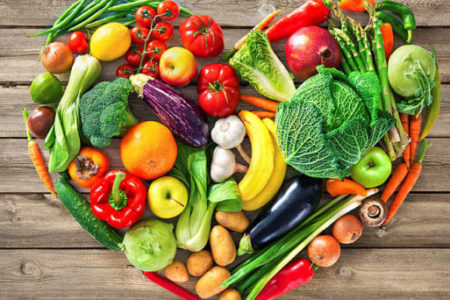COLUMN: Alkaline is Where it's At: Part 2
Measuring your pH is simple. Take any 4 days and test every urination after the first urination in the morning with a indicator paper (called pH paper), which show the pH values between 4.0-7.5. (These you can buy at your friendly compounding pharmacy or spa store). If the value shows repeatedly below pH 7.0 (neutral), or when it constantly registers around pH 5 — danger exists. You need to change to a high vegetable/fruit/whole grain diet and again test the pH for a day. This gives you an idea of how many vegetables and fruits you need to add to your typical diet for balance. This will keep you neutral or slightly alkaline most of the time, so, all the processes in your body are working well!
Being physically active also reduces the acids in the body, so, incorporate at least 45 minutes of walking, running, skiing, biking, hiking or snow-shoeing, dancing a day and start absorbing that wonderful sunshine out there!
Following strenuous activity or after eating a large meal, larger quantities of acid are produced. Since the kidneys work quite slowly, they are not able to eliminate the salts quickly enough. As a result, the connective tissue has to function as as “pre-kidney” and stores these salts to reduce the burden on the kidneys. If the build-up of acids becomes excessive, the connective tissue surrounding the cells and organs absorb and store acid released from the cells and organs and result in “sore muscles”. During the night, these deposited salts are transported by the bloodstream to the kidneys for elimination. Therefore the urine is more concentrated and has its maximum acid concentration in the mornings. When the collection of acids in the connective tissue is no longer adequate to protect the kidney and other organs, over-acidification occurs – called acidosis. This over-activity of the excretory organs is characterized by acute or chronic inflammation.
ONE’S DIET SHOULD BE OVERALL NEUTRAL or ALKALINE!
When considering your diet, you need to establish the correct balance between foods rich in acids and those rich in bases.
FOODS RICH IN BASES:
- All green leafy veggies –-kale, swiss chard, parsley, cilantro, arugula, collards, dark green lettuces). Start adding these to stir-fries, soups or stews.
- Most vegetables — carrots, celery, beets, squash, yams, beans, peas, broccoli, cabbage, brussel sprouts, sprouts etc (except cauliflower). Eat these for lunch, in a salad or for a snack.
- Most fruits, especially the dark fleshed fruits such as cherries, berries, plums, prunes and to a lesser extent pears, apricots, peaches, figs, bananas, raisins, mangoes, papaya etc. Add these to your breakfast cereal or yogurt.
- Raw, unsalted seeds — sunflower, sesame, pumpkin, flax, chia or hemp. Eat at least 2 tbsp/day of these on cereal, salads or as a snack.
- Raw Almonds. An excellent source of protein.
- Non-gluten grains — quinoa, millet, brown rice, buckwheat, amaranth and teff. Cook these just like rice.
FOODS RICH IN ACIDS:
- Most Protein — pork, beef, bison, lamb, wild meat, fish, chicken, turkey, eggs and other nuts. The least acidic is wild fish like salmon, herring, sardines or organic chicken, turkey, lamb and wild meat, eggs and nuts.
- All dairy products, especially cow. Try some of the delicious goat or sheep products like goat feta or gouda, sheep manchego (like romano), crotenese (like cheddar), pecorino (like parmesan) or Roquefort (like blue).
- Refined carbohydrates– anything white-sugar, pasta, bread, crackers, flour, potatoes. Use multi-grained products.
- Grains-wheat, barley, oats, rye, spelt, kamut. Try the others like quinoa.
- Citrus fruits- lemons, limes, oranges, grapefruit (Note: There is a lot of mis-information about lemons/limes being alkalinizing—they’re not!) Any other fruit is fine!
- Tomatoes (Grow the Russian purples, orange or yellow tomatoes that are low in acidity or even better yet red peppers!)
- Stimulants — coffee, decaff coffee, black/green/white/chai tea, herba mate, honeybush, rooibos. Drink herbal teas such as Bengal spice, Rosaroma, Sleepytime, Peppermint, Spearmint, Egyptian licorice mint or any other your enjoy. For instant hot drinks, there’s Bambu, Inka Dandelion blend or a brewed coffee substitute called Teeccino. These are available at your local health food store or Ferraro’s.
- Alcohol — Keep it to 2-3 drinks per week
- White, balsamic, apple cider vinegar (Use rice vinegar instead- it is very low acidity)
WATER:
- Water- Check the pH of your drinking/cooking water. It should be between 7.0-7.3. If your water is acidic, you need to use a solid carbon block filter to REMOVE the chlorine and other chemicals from the water. Santevia and Rainfresh make good quality water filters.
Therefore, the most important corrective steps for an over-acidified system are:
- Dietary changes
- Sufficient exercise
- Proper breathing
- Drink neutral or alkaline water
Next week, I’ll go through some other ways to help keep you alkaline!
If you still would like to investigate this further, consider an individual assessment done about your level of health, call Dr. Brenda Gill at 250-362-5035
























